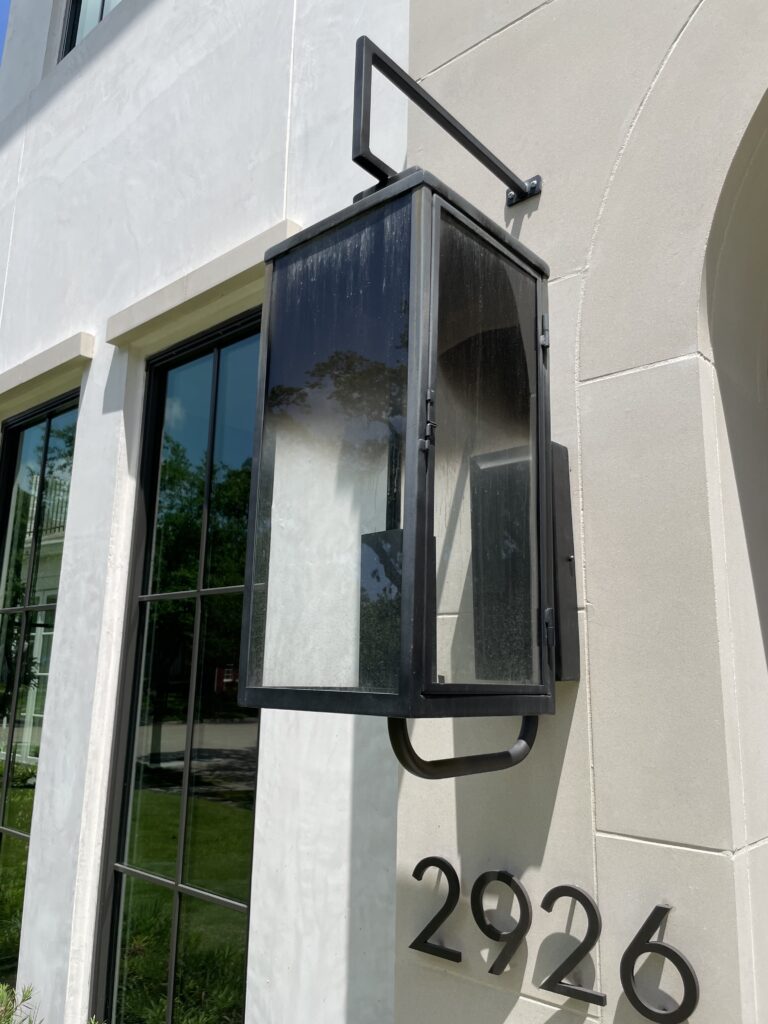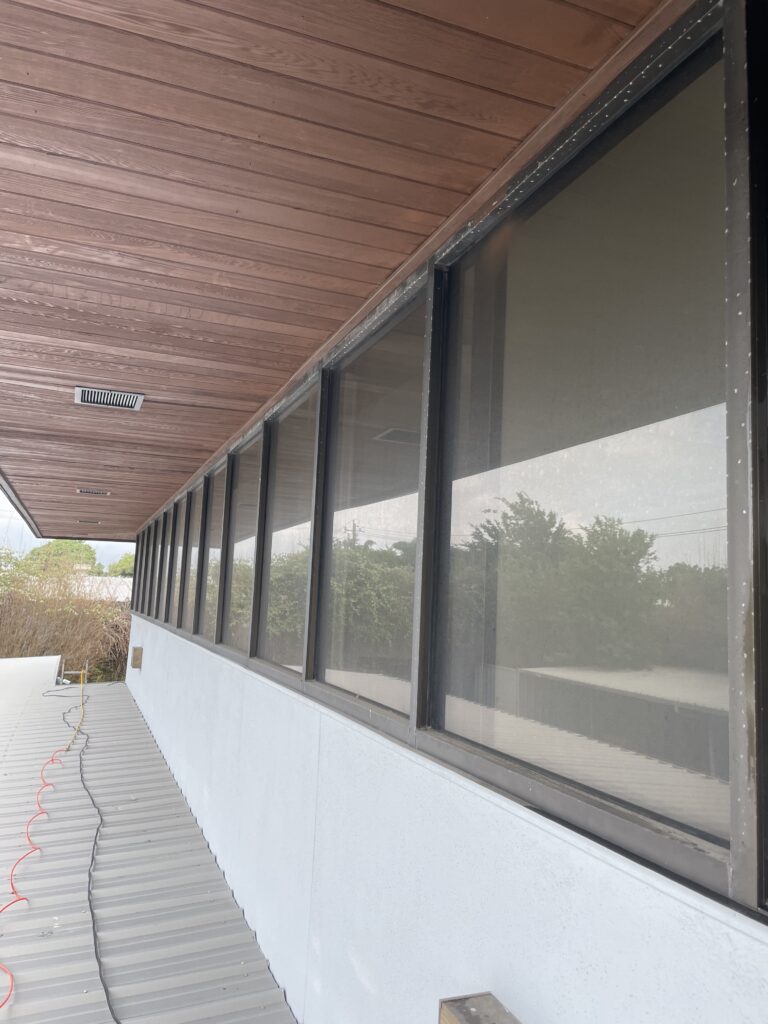Did you know nearly 47% of U.S. homes have dampness or mold issues? Mold on windows is one of the most common and overlooked issues, often caused by condensation and poor airflow. If left untreated, it can spread quickly, leading to potential health hazards and costly damage.
Whether dealing with black mold on window sills or stubborn mold between window panes, learning how to clean mold from windows is essential for maintaining a healthy and mold-free home. In this guide, we’ll cover effective cleaning solutions, step-by-step removal methods, and preventative measures to stop mold from returning.
How to Clean Mold from Windows: Understanding the Basics
Mold growth on windows is a common problem for homeowners, often resulting from excess moisture and poor airflow. If left untreated, mold can spread, leading to damage, unpleasant odors, and health risks. Learning how to clean mold from windows effectively is the first step in preventing it from returning and keeping your home safe.
What is Black Mold?
Black mold, scientifically known as Stachybotrys chartarum, is a toxic mold species that produces dangerous mycotoxins called Trichothecenes. These toxins can become airborne, attaching to dust particles and infiltrating indoor air, making them easy to inhale. Exposure to black mold has been linked to respiratory distress, skin irritation, chronic fatigue, and even neurological issues such as confusion and memory problems. If left untreated, black mold can pose serious health risks, particularly for individuals with allergies, asthma, or weakened immune systems.
Why Does Mold Grow on Windows?
Mold on windows from condensation is one of the most common causes of window-related mold issues. When warm indoor air meets the cold surface of your windows, condensation forms, creating the perfect breeding ground for mold in window sills and frames. Poor ventilation can worsen the problem, allowing mold in the windows to thrive unnoticed. Additionally, if window seals are damaged, rainwater and outside moisture can seep in, leading to persistent black mold window sill growth.
The Hidden Dangers of Mold on Windows
Mold on window frames and sills isn’t just an eyesore—it can lead to significant health and structural problems. Exposure to mold spores can trigger allergies, respiratory issues, and sinus infections. If left untreated, mold can weaken window seals and deteriorate wooden frames, leading to costly repairs.
Common Causes of Mold on Windows
Mold thrives in damp environments, and mold on windows is often a sign of excess moisture in your home. Understanding the causes of window mold can help prevent window mold before it becomes a bigger problem, whether it’s due to condensation, high humidity, or faulty seals.
Excess Moisture Build-up
Condensation and mold on windows are closely connected. Trapped moisture creates the perfect environment for mold to grow. When warm indoor air meets a cold glass surface, condensation forms, leading to mold on windows, especially during colder months.
High Indoor Humidity
Moisture lingers in the air without proper ventilation, making mold in windows a common problem in kitchens, bathrooms, and laundry rooms. If humidity remains above 60%, the trapped moisture encourages moldy windows, so it’s important to know how to clean mold off window sills.
Improper Window Seals
Leaky or worn-out seals allow rainwater to seep into crevices, leading to black mold in windows and hidden moisture damage. Over time, this trapped moisture accelerates the growth of black mold around windows, making it harder to control without proper repairs.
Signs You Have Mold in Windows
Knowing how to clean mold in windows isn’t always easy to spot, but certain warning signs indicate a growing problem. If left untreated, window mold can spread quickly, affecting indoor air quality and causing damage to your home.
Black or Green Spots
Dark patches of black mold in window sills, frames, and tracks are a clear sign of mold growth. These spots often start small but can rapidly expand if moisture issues are not addressed.
Musty Odor
A damp, musty smell near your windows may signal mold in the sills, even if visible signs have yet to appear. Hidden mold can thrive inside window frames and behind caulking, making odor among the earliest red flags.
Condensation Buildup
Persistent condensation and mold on windows go hand in hand. Excess moisture creates the perfect breeding ground for mold spores. If you frequently see water droplets on the glass or along the window sill mold spores may be forming.
Allergy Symptoms
If you experience frequent sneezing, coughing, itchy eyes, or breathing difficulties near your windows, mold could be the culprit. Exposure to black mold around windows can trigger allergic reactions and worsen respiratory conditions.
List of Different Mold Cleaning Solutions
Mold on windows can be stubborn, but choosing the right cleaning solution makes all the difference. Whether you prefer natural remedies or stronger chemical options, here’s how to remove mold from windows safely and effectively.
Natural Solutions
If you’re looking for eco-friendly ways to tackle mold on windows, these natural remedies effectively remove mold while being safe for your home and family.
Vinegar
White vinegar is a powerful, natural antifungal agent. Spray undiluted vinegar directly on the mold and let it sit for 60 minutes before wiping it clean.
Baking Soda
A baking soda and water paste is a mild abrasive to scrub the mould away without damaging surfaces.
Tea Tree Oil
To kill spores and prevent regrowth, mix a teaspoon of tea tree oil with water and spray it onto moldy windows.
Chemical Solutions
For tougher mold infestations, chemical solutions provide a stronger approach to eliminating mold and preventing its return on windows, sills, and frames.
Hydrogen Peroxide
A 3% hydrogen peroxide solution effectively kills mold on window frames and prevents staining.
Isopropyl Alcohol
Will isopropyl alcohol kill mold? Alcohol can kill mold on non-porous surfaces but works best as a disinfectant after mold removal.
Bleach
While bleach kills mold on non-porous surfaces like glass, it does not penetrate porous window frames and may not prevent regrowth.
How to Clean Mold from Windows: A Step-by-Step Guide
Dealing with mold on windows can be frustrating, but the right approach makes removing and preventing regrowth easy. Follow these steps to safely and effectively master cleaning mold from windows.
1. Gather Supplies & Wear Protection
Always wear gloves, goggles, and a mask to avoid inhaling airborne mold spores. This is especially important when dealing with black mold on window sills, which can release harmful particles into the air.
2. Ventilate the Area
Open nearby windows and turn on fans to improve airflow while working. Proper ventilation helps reduce condensation and mould on windows, preventing future buildup.
3. Wipe Away Loose Mold
Use a microfiber cloth or disposable paper towel to gently remove any mold. This step is crucial before applying any cleaning solution, as loose spores can spread if disturbed.
4. Apply Cleaning Solution
Spray the affected areas with vinegar, hydrogen peroxide, or bleach, ensuring even coverage.
5. Scrub Affected Areas
Work the cleaning solution into the moldy spots using a scrub brush or sponge. Apply extra pressure to deep crevices to know how to clean window sills, ensuring complete removal.
6. Rinse & Dry Thoroughly
Wipe the cleaned areas with fresh water to remove any remaining residue. Then, completely dry the surface to prevent mold on windows from condensation, which can trigger regrowth.
Prevention Tips for Black Mold on Window Sills
Preventing black mold on window sills starts with controlling moisture. By reducing humidity, improving ventilation, and keeping window areas dry, you can stop mold before it has a chance to grow.
Reduce Indoor Humidity to Prevent Moisture Buildup
Use a dehumidifier or run an air conditioner to maintain humidity between 30% and 50%. Excess moisture in the air creates the perfect conditions for mold on windowsills, so keeping levels low helps prevent growth.
Improve Ventilation by Using Fans and Opening Windows
Poor airflow traps moisture, increasing the risk of window mold. To reduce condensation and mold on windows, use exhaust fans in bathrooms and kitchens, open windows when possible, and keep air circulating.
Wipe Away Condensation Daily to Keep Window Sills Dry
Water droplets collecting on glass and frames can eventually lead to black mold on window sills. To prevent mold on window frames, wipe down surfaces daily, especially in colder months when condensation and mildew are more common.
How Geek Window Cleaning Can Help Keep Your Windows Mold-Free
At Geek Window Cleaning, we go beyond just knowing how to clean mold from windows—we help prevent it from coming back. Our expert cleaning services remove mold, mildew, dirt, and grime, ensuring your windows look spotless.
Professional Window Cleaning for Mold Prevention
Our professional window cleaning services in Houston and Austin don’t just make your windows shine—they help eliminate window mold and the moisture buildup that allows it to thrive. Regular cleaning can prevent black mould in window sills before it becomes a bigger problem.
Additional Services to Help Combat Mold Growth
Mold thrives in damp, neglected spaces. That’s why we offer more than just window cleaning services. Our other services that tackle the root causes of mold include:
Pressure Washing
Mold and mildew often extend beyond windows, creeping onto siding, decks, and walkways. Our pressure washing services remove mold spores from exterior surfaces, reducing the chance of regrowth near windows.
Gutter Cleaning
Clogged gutters lead to water overflow, increasing moisture exposure on windows and walls. Keeping your gutters clear helps prevent condensation and mold on windows.
Roof Cleaning
Algae, mold, and dirt buildup on your roof can increase moisture around your home, creating ideal conditions for mold in windows. Ensuring a clean roof means less mold overall.
Conclusion: Protect Your Home by Learning How to Clean Mold from Windows
Understanding how to clean mold from windows is key to keeping your home safe. Mold thrives on excess moisture, poor ventilation, and condensation, but using the right solutions—like vinegar, hydrogen peroxide, or bleach—can remove it effectively. Prevent future growth by improving airflow, sealing gaps, and reducing humidity.
If the mold in windows keeps coming back, let the experts handle it. Geek Window Cleaning provides professional cleaning to remove mold, dirt, and grime from your home’s windows, roof, and gutters. Contact us today for a free quote!
FAQs About How to Clean Mold from Windows
How do you clean mold off window sills without damaging them?
Use a mild solution like vinegar or hydrogen peroxide with a microfiber cloth to gently remove mold.
Does alcohol kill mold on windows?
If you’re wondering, “Will alcohol kill mold,” the answer is yes! Alcohol can disinfect moldy areas, but it’s best used after scrubbing away visible mold.
Can bleach remove mold on window frames?
Bleach can remove mold on non-porous surfaces like glass but is ineffective on porous materials.
What causes black mold in window sills?
Excess moisture, condensation, and poor ventilation create ideal conditions for mold growth.
How to get rid of mold in window sills permanently?
Prevent mold by reducing humidity, improving airflow, and sealing window leaks.
FAQs About Geek Window Cleaning
What services does Geek Window Cleaning offer?
We provide professional window cleaning, pressure washing, and exterior maintenance services.
Does Geek Window Cleaning remove mold on windows?
Yes, our expert window cleaning service in Austin and Houston helps remove mold and prevent buildup on your windows.
What makes Geek Window Cleaning different from other window cleaning companies?
We guarantee high-quality service with eco-friendly cleaning solutions and a customer satisfaction guarantee.
How do I schedule an appointment with Geek Window Cleaning?
Visit our website to book an appointment or request a quote today!





Recent Comments